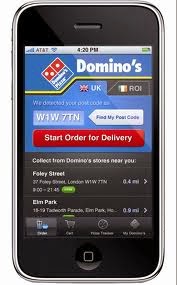Share this:



We released the results of our 2014 Customer Loyalty Engagement Index last week (click here to download the 64-category/555-brand rankings), and it turns out that innovation is one of the critical emotional values that fires up engagement, loyalty, and differentiation, as well as consumer behavior in virtually every category. It’s been independently validated that once a brand fires up emotional engagement and loyalty and differentiation, sales and market share heat up too. Which is pretty much the aim of every brand, but, of course, is more easily said than done.
“Pizza” is one of the categories we measure, and if you think that introducing innovation as a major ingredient to a pizza brand’s recipe for success is easy, you should think again. From an emotional perspective, when it comes to innovation consumers are not talking about cooking techniques (coal ovens vs. wood-fired), crust thickness (paper thin vs. deep dish), or toppings. Not even alici fresche or brie e carciofi (fresh anchovies or brie and artichokes). No, we’re talking about a kind of innovation that moves beyond personal taste to something that changes the dynamics of the category and impacts consumer expectations and, ultimately, how they compare and choose brands. We’re talking about engagement innovation.
This year, here’s how major chains’ own customers rated them when it came to that kind of innovation.
Domino’s (96%)
Pizza Hut (87%)
Papa John’s (86%)
Little Caesars (80%)
Papa Murphy’s (75%)
Sbarro (70%)
Chuck E. Cheese (68%)
If you’re surprised Domino’s is at the top of the innovation list, you shouldn‘t be. Back in the ‘70’s they introduced the 30-minute delivery-time concept, an innovation that dramatically increased consumer expectations in regard to getting their hands on a pizza sooner rather than later. This is the food version of Zappo’s innovative free, 2-day delivery-return policy, which compelled clicks and bricks retailers to adopt new standards to meet newly created consumer expectations for virtually any brand that had something to deliver and something a consumers might return.
Four decades later, Domino’s continues to innovate à la emotional engagement. They were the first national chain to promote an online order-and-pay system, informing consumers that they could use an app to order without the inconvenience of the voice command on their smartphone, let alone dial by hand. Once again, Domino’s is raising customer expectations, giving them an edge when it comes to engagement innovation.
It’s been reported that the major chains currently derive between 40-50% of their sales from digital orders. And when it comes to, well, most everything, the convention and convenience of apps continues to feed consumer expectations. But it turns out that where this increase in consumer expectations is making itself most strongly felt is among the traditional, local, independent mom-and-pop pizzerias. Their inability to invest in an app-based technological infrastructure for ordering has been creating a real bottom-line digital-divide.
Can the neighborhood-based mom-and-pops with individualized customer service and gourmet ingredients fend off the kind of innovation that seems to be so strongly and emotionally resonating with consumers? Time will tell. But right now apps are a way for brands to better meet customers’ engagement innovation expectations in the pizza category, and look to be a way brands will be able to earn a bigger slice of the pie.
And, like every other category we track, if your brand can do that you’re sure to serve up your shareholders real dough.
Connect with Robert on LinkedIn.
Find out more about what makes customer loyalty happen and how Brand Keys metrics is able to predict future consumer behavior: brandkeys.com. Visit our YouTube channel to learn more about Brand Keys methodology, applications and case studies.
Share this:





